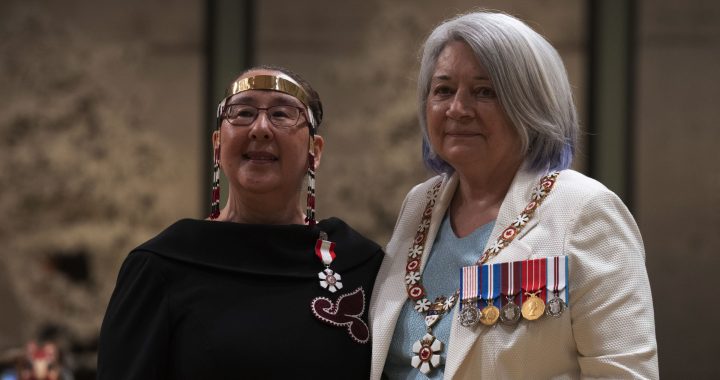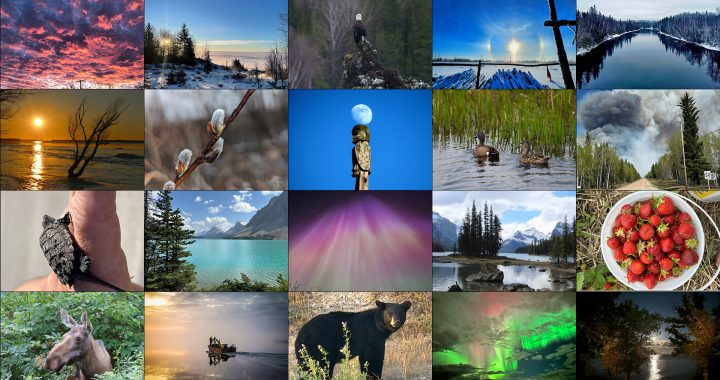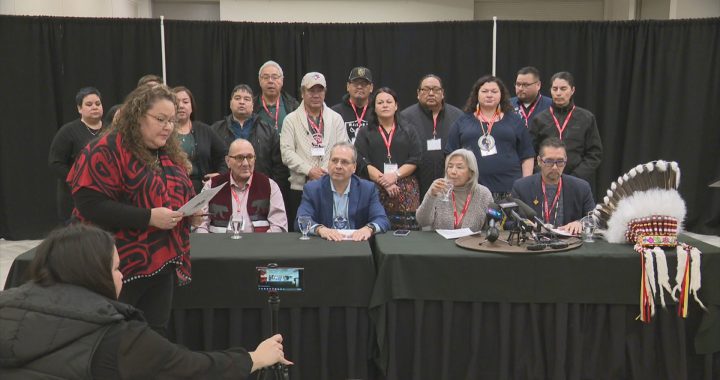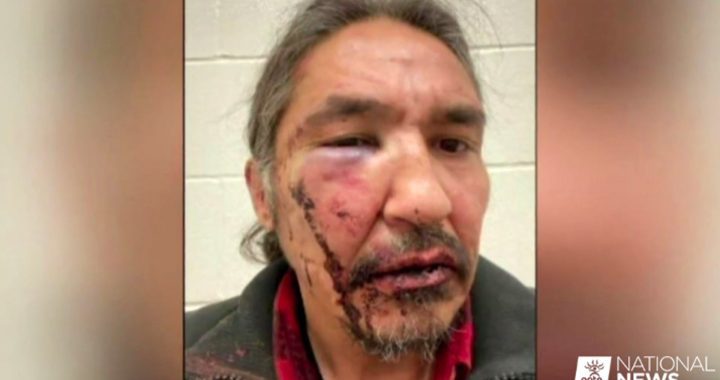Even though Kataluk Paningayak was five years younger than her sister Maggie – she set an example to look up to.
According to Maggie Naluiyuk, back home in Ivujivik – the northernmost community in the Quebec’s subarctic region of Nunavik – Kataluk was very involved in school committees, community functions, and often honed her skills with a needle and thread at sewing circles.
“The last thing she made was an amauti for herself – it was beautiful,” Naluiyuk told APTN News in a phone interview from Ottawa, where she lives now. “[Kataluk] was a very caring person. She was doing the things that I’m not doing. She was very outgoing, and she was well-known by the community for helping.
“For instance – if somebody died, she would be going to the places where someone had just lost family, for sympathy. Or to be there for them.”
In a tragic twist, in late March, Kataluk was killed by her partner in a suspected murder-suicide.
Naluiyuk says this turn of events has been “overwhelming.”
After spending over 20 years in an abusive relationship and living with the aftershock of an aunt’s murder, Naluiyuk left her home community to seek treatment over a thousand kilometres to the south in Montreal.
“I needed to heal from my childhood – growing up, not just with my ex, you know?” Naluiyuk explained. “I wanted to end this for the longest time. But when you’re being abused, you can’t get to do everything you want, because you’re being controlled with everything in your life. That’s the abusive cycle – that’s how it is.
“People who don’t have things like [therapy] – who don’t have a place of their own and are struggling, they don’t really get to do anything at all. Because there’s nothing they can really do.”
A ‘crisis’ long-known to the North
Kataluk Paningayak is one of ten Quebec women killed by domestic violence in the last ten weeks.
Hers is the second domestic violence-related death recorded in Nunavik this year.
Elisapee Angma, a mother of four from Kuujjuaq, was allegedly killed by a violent partner in early February of this year.
While Quebec is only now calling this series of preventable deaths “a crisis,” the issue of domestic violence is well-known to the communities of Nunavik.
Although the total Nunavik population is about 12,000 people, crime statistics show the region logged almost 1,200 domestic violence charges – and three murders – in the year 2019 alone.
According to Indigenous Services Canada, more than 70 per cent of Inuit communities nation-wide do not have proper access to emergency shelters, or alternative housing.
The Nunavik Regional Board of Health and Social Services (NRBHSS) confirmed this is still the case.
“There’s not nothing to offer – but there’s not much,” explained NRBHSS’s Psychosocial Affairs and Community Services Coordinator, Genevieve Pellerin.
Pellerin said high staff turnover and burnout make it difficult to both kickstart and maintain programs on a long-term basis.
Three women’s shelters are currently carrying the weight for Nunavik’s 14 fly-in communities.
“To access that women’s shelter or that service, you need to reach out to social services – for example – or a community worker,” Pellerin explained. “And then you sometimes have to make the difficult choice to either leave your community to go somewhere else or stay in the community with all that goes with it.”
Anyone familiar with the social context in Nunavik can attest to its complexity.
Lack of adequate housing, employment insecurity, and lack of therapeutic or culturally-adapted resources all have their part in feeding issues of domestic violence, according to Pellerin.
“[Healing programs] are not missing – but they’re still being built and recognized,” she said.
While the federal government has pledged hundreds of millions of dollars to address shelter needs and housing insecurity for Inuit across Canada, Quebec – in its 2021 budget – offered just under $5 million as a blanketed investment to combat “domestic violence” as a whole.
“When there’s an emergency or a crisis, we respond to the issues that are already existing, or the ones that are the most urgent. But if we really want to work and avoid these situations happening again, we need to work on the depth of the problem. The population has suffered a lot over a short period of time, and there’s a lot to address,” Pellerin said in reference to recent colonial-inflicted traumas such as residential schools, forced relocation, and an RCMP-enforced dog slaughter.
“Self-esteem to be rebuilt as individuals, but also as a culture, and as a community.”
What about the men?
While addressing the recent domestic violence “crisis,” Quebec Premier Francois Legault urged women in abusive situations to seek help and make use of emergency resources already in place.
His response was criticized by both opposition leaders and leaders of women’s groups for putting the onus on women alone.
While interviewing for this story, both Naluiyuk and Pellerin mentioned the lack of attention being paid to men’s needs in the overall conversation about domestic violence.
To counter the issue, the MMIWG national inquiry called for communities to “educate men and boys about the unacceptability of violence against Inuit women [and] girls.”
Pellerin said a men’s healing program through the NRBHSS was put on hold because of the COVID-19 pandemic.
But in the community of Inukjuak – one men’s association has been going strong for the last 20 years.
The Unaaq Men’s Association of Inukjuak was established in 2001 – with a $2,000 operating budget – to respond to a youth suicide crisis in the community.
“We’re not just out to hunt animals, we’re out to equip our young men with the tools – not only the hunting tools – but the skills they need to hunt and survive off the land,” explained Tommy Palliser, assistant manager of Unaaq.
“Between 9 to 5, it’s pretty much education and employment that we focus on – but it’s those after-hours that we really focus on. Weekends as well. And also those who do not have employment: what skills can they acquire, can they develop?”
The association favors on-the-land learning for Inuit youth – teaching them hunting, fishing, shelter-building, and artisanal skills in hopes of raising self-esteem and fostering an overall sense of belonging.
“There’s some youth now with single mothers – who don’t have the fathers in the picture anymore who can teach those skills,” Palliser explained. “There’s other target groups: the ones just coming out of the justice system, coming out of prison – they have no employment, [and] a lot of the employment opportunities have been closed because they have criminal records.
“We support them as well – helping them get back on their feet.”
But securing funding, Palliser said, requires some creativity – and a whole lot of grant applications.
The community of Kuujjuaq has even reached out and spent time with the group, hoping to establish their own men’s association back home.
“We’re supporting one extra community, but there are other communities that are pretty much in the same place,” Palliser explained. “They have the need, but they’re having a challenge on where to start.”
Palliser’s goal is to see these programs and associations grow and spread across Nunavik, and eventually, Canada.
“Sharing ideas, sharing the challenges we face – there can be some very good collaborations across the cultures,” he said. “We do have different languages, but we share some similarities in our cultures.”
Without hesitation, Naluiyuk said implementing more programs like Unaaq across Nunavik could be life-changing for Inuit.
“For men, there’s not a whole lot,” Naluiyuk said. “I think it’s a very good idea – it would help a lot of men to occupy themselves, and to help them with money to put food on the table with the things that they make.”
Though she had to eventually leave home to get help, Naluiyuk still swears by therapy or other “healing” services to break the cycle of abuse.
“I myself, I was violent too – to be honest – when intoxicated,” Naluiyuk said.
“Going through counselling, getting help. That makes a big difference.”










